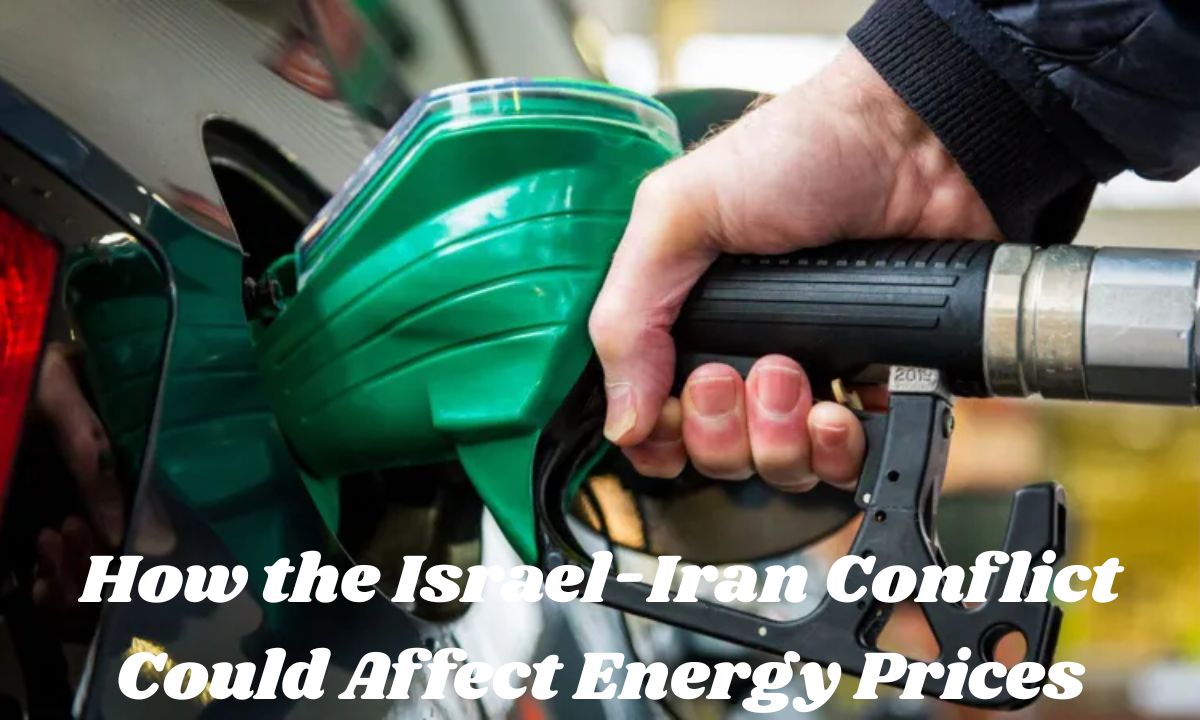Tensions between Israel and Iran have once again made headlines, this time sparking concerns not just in the Middle East but across global financial markets. As missiles and drones crisscrossed skies over the weekend, energy markets reacted instantly, with oil and gas prices surging. This kind of geopolitical unrest isn’t just regional—it’s a global issue with ripple effects that can touch everything from the price of gas at your local pump to your grocery bills.
In this article, we explore the direct and indirect impacts of the conflict on energy prices, analyze the data behind recent oil surges, and explain what this could mean for global economies.
How the Israel-Iran Conflict Could Affect Energy Prices
Geopolitical instability in the Middle East often has a direct impact on global energy markets. The region is home to several major oil-producing countries, and any disruption—real or perceived—can influence market behavior.
The Strait of Hormuz, a narrow waterway off Iran’s southern coast, is one of the most crucial oil shipping lanes in the world. Roughly 20% of all global oil passes through this chokepoint. Any threat to its stability, whether through military action or political posturing, makes investors nervous and sends prices up.
When tensions rise, oil traders price in risk. Even if physical oil supply isn’t disrupted, the mere threat of instability is enough to increase prices. These price hikes aren’t just about supply and demand—they’re about market psychology, risk hedging, and speculation.
How Much Have Oil Prices Risen?
Following the recent Israel-Iran strikes, Brent Crude oil jumped to over $78 per barrel, up from around $68 just a month earlier. Though prices have eased slightly to around $74.50, they remain significantly elevated.
For context:
- A year ago: Brent was around $85.
- During the Ukraine invasion (2022): It soared to nearly $130 a barrel.
Even though the current increase doesn’t approach past highs, a $10 jump in just weeks is enough to make markets—and consumers—take notice.
Oil prices naturally fluctuate, responding to geopolitical tensions, weather events, production decisions by OPEC+, and broader economic trends. But fast surges like this are rarely good news for end consumers.
So Will Petrol and Other Prices Go Up?
Most likely—yes, but not immediately or uniformly.
Petrol prices at the pump are closely tied to wholesale oil costs, though with some delay. A general rule is that every $10 rise in oil prices adds about 7p per litre of petrol in the UK (or a similar impact in other regions).
However, the impact isn’t limited to gas stations:
- Farming: Machinery runs on fuel, and irrigation systems require electricity.
- Manufacturing: Higher energy costs can increase production costs.
- Food: Transport, refrigeration, and packaging all rely on energy.
- Travel: Airfares and holiday prices may rise if aviation fuel becomes costlier.
Still, much depends on how long prices stay high. A short-term spike may not significantly affect consumer prices, but a sustained rise over weeks or months almost certainly will.
Global Oil Prices Soar After Israel Attacks Iran
The sudden escalation between Israel and Iran—both powerful military players—was bound to rattle markets. Israel’s strikes on Iranian sites and Iran’s retaliatory response caused global uncertainty. As energy traders responded to the news, oil prices reacted instantly.
Here’s why oil markets are so reactive:
- Middle East Instability: Any conflict in the region is treated as a global risk due to its oil output.
- Energy Infrastructure at Risk: Military conflicts can threaten refineries, pipelines, and shipping routes.
- Investor Behavior: Traders rush to secure oil futures during crises, inflating prices quickly.
This is not the first time such a pattern has been observed. Similar spikes occurred during the Gulf War, the Arab Spring, and more recently, the Russia-Ukraine war.
What We Know About Israel’s Attacks on Iran’s Nuclear Sites and Military Commanders
While not all details have been officially confirmed, multiple credible sources report that Israel targeted key Iranian military sites, including locations believed to be tied to nuclear weapons development. The attacks involved drones and precision strikes on facilities thought to house missile production systems and intelligence command centers.
Iran’s immediate retaliation through drone and missile strikes was equally significant, aimed at Israeli military infrastructure. Both nations have escalated their rhetoric, and while a full-blown war remains unlikely, the tit-for-tat dynamic has heightened regional tensions significantly.
Why does this matter for energy?
Iran has historically threatened to block the Strait of Hormuz during moments of extreme conflict. If such a threat were realized, the global oil market could face serious disruption—far more than the current price spike.
Could Oil Prices Rise Higher?
Yes—but it depends on several factors.
Oil Prices Could Rise If:
- The conflict drags on or escalates further.
- Other regional actors get involved (e.g., Hezbollah, Syria, or Gulf states).
- The Strait of Hormuz is blocked or even threatened.
- The U.S. or other powers respond militarily, creating wider uncertainty.
Oil Prices Could Stabilize If:
- Diplomatic efforts succeed, especially from the U.S.
- The conflict remains limited in scope.
- OPEC+ or countries like Saudi Arabia increase production to balance markets.
Currently, energy analysts consider further escalation a possibility, though not inevitable. While prices may climb a bit higher in the short term, many believe this won’t mirror the sustained shock seen after the Ukraine war—unless physical oil flows are interrupted.
What Does It Mean for the Global Economy?
The implications of rising oil and gas prices go well beyond fuel bills.
1. Inflation Pressure
Higher energy prices translate into higher overall inflation, making it more expensive for households to buy goods and services. In developed economies, an oil price above $100 per barrel could add up to 1% to inflation, according to Capital Economics.
2. Central Bank Dilemmas
Inflation makes it harder for central banks like the Federal Reserve or the European Central Bank to cut interest rates. This means:
- Higher borrowing costs
- Slower economic growth
- Struggles for businesses and consumers alike
3. Supply Chain Issues
Expensive energy can make shipping and transportation more costly, which in turn slows down supply chains and raises prices globally.
4. Stock Market Volatility
Markets dislike uncertainty. Rising oil prices, combined with geopolitical fears, could cause equity markets to wobble, especially in sectors like travel, retail, and manufacturing.
5. Global Development Risks
Emerging markets are particularly vulnerable. Countries reliant on energy imports may face widening deficits, currency devaluation, and even social unrest if fuel subsidies are cut.
Final Thoughts
The Israel-Iran conflict has clearly had an immediate impact on global oil prices, triggering fears of inflation and market instability. Whether this moment becomes a brief blip or a lasting economic challenge depends on how the situation evolves in the coming days.
While physical oil supplies have not been disrupted, the threat of escalation and shipping route instability is enough to unsettle global markets. Consumers might see fuel and grocery bills rise if the situation drags on. For governments and central banks, this adds another layer of complexity in managing inflation, interest rates, and economic growth.

I’m Brook, a passionate blogger with 8 years of experience. I love writing about tech, fashion, business, and health. My goal is to share useful information and insights with you. Explore my website to discover exciting content on various topics!








